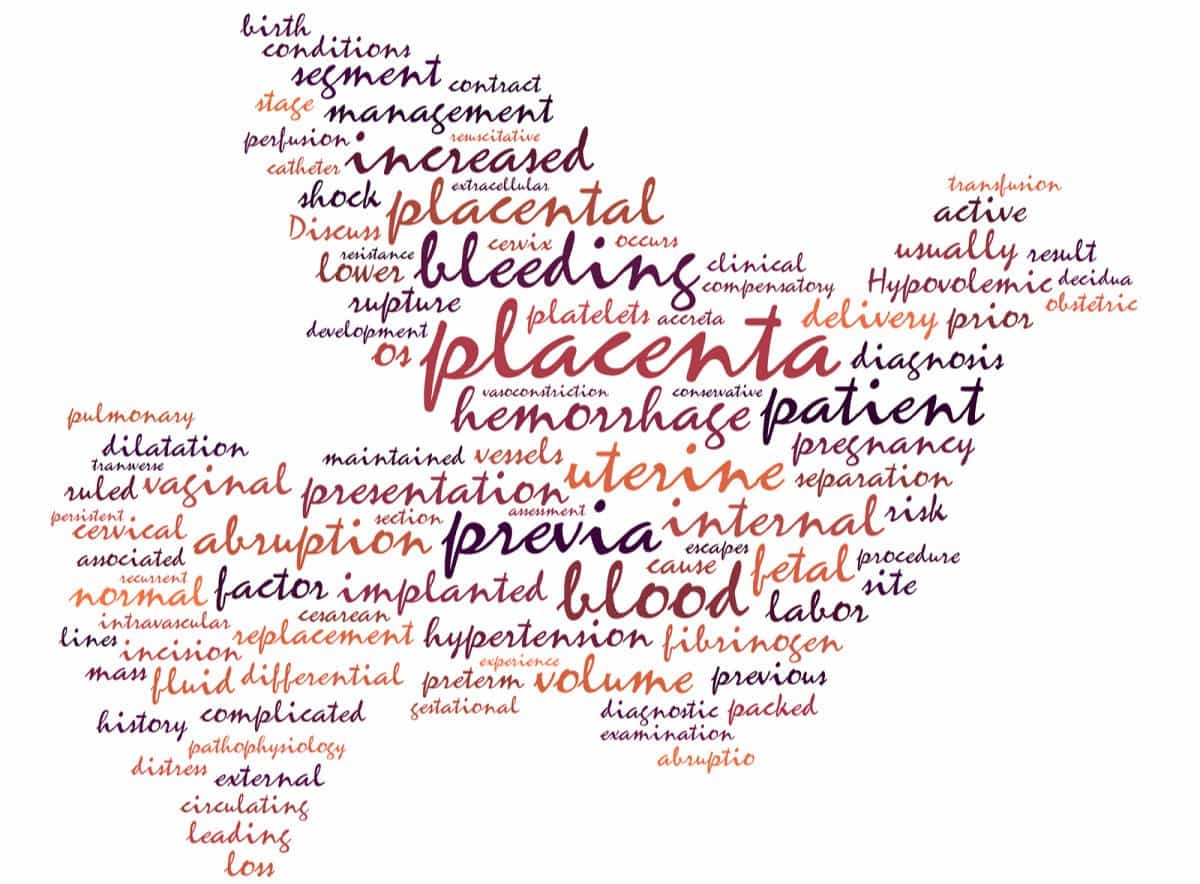Spotting or bleeding occurs in approximately 20% of women…
In the first trimester spotting or bleeding occurs in approximately 20% of women. The normal spotting occurs during less than 24 hours and is usually very light bleeding.
Natural causes of bleeding are
- Cervical irritation. Since extra blood flows to the cervix during pregnancy, a pap smear test or intercourse can cause bleeding that is of no concern.
- Implantation bleeding. It is normal to see some vaginal spotting in the first two weeks after conception. The bleeding is thought to be caused by the implantation of the fertilized egg in the lining of the uterus. This can last for hours or even days.
Bleeding can also be a cause for concern in this period since half the women that present normal spotting miscarries. However, if the 7 to 11 weeks ultrasound shows normal heartbeat, the pregnancy is viable in 90 percent of the cases.
The most common causes for unusual bleeding are:
- Infections by sexually transmitted diseases, yeasts or bacterial vaginosis can cause bleeding of the cervix or vagina.
- If the bleeding is accompanied by tissue passing in the vagina and cramps in the lower abdomen it is a symptom of miscarriage.
- Ectopic pregnancy. Bleeding is caused by implantation of the embryo in the fallopian tube which can be dangerous for the mother. This is usually accompanied by other symptoms such as cramps and lightheadness.
- Molar pregnancy. Growth of abnormal tissue in the uterus that can cause bleeding, nausea and vomiting. This is rare but if the tissue is cancerous it can spread to other regions of the body.
- Chorionic hematoma. This occurs when blood accumulates between the membrane surrounding the embryo (chorion) and the uterine wall.
In the second and third trimester bleeding is usually cause for concern. The possible causes are:
- Premature labour. In late pregnancy bleeding can be caused by the passing of the mucus plug that covers the cervix. It is normal if occurring after the 37th week of pregnancy and indicates that the body is getting ready to deliver.
- Placental abruption. If the placenta detaches from the uterus blood pools in the space and it can be very dangerous for the baby and the mother. Placental abruption has other symptoms such as back and abdominal pain, vaginal clots and tenderness in the uterus.
- Placenta previa. This condition can be painless and requires immediate medical care. It is a rare condition that consists in the placenta covering the birth canal.
- Vasa previa. When the fetal blood vessels (umbilical cord or placenta) tear due to crossing the opening to the birth canal.
- Uterine rupture. This can occur when the uterus tears open in the scar of a previous C-section. While this condition is rare it is life-threatning.
- Injury to the cervix or vagina
- It is a benign growth on the cervix that can cause spotting or bleeding after sex.
- Cervical cancer. It is due to the growth of abnormal cells in the cervix that can invade or spread to other parts of the body.
- Hematological disorders. Disorders that affect the normal coagulation of blood predisposing individuals to heavy bleeding during pregnancy.
What to do if you are bleeding?
Even though bleeding can be normal throughout pregnancy it is best to contact your doctor when it happens. In the first trimester you should tell your doctor about any vaginal spotting or bleeding, even if it is transient, in the first prenatal consult. If the bleeding goes on for more than 24 hours or if you have any other symptoms besides light bleeding you should contact your physician immediately.
In the second trimester bleeding should be considered more seriously, even light vaginal bleeding that goes away within a few hours is enough cause to call your doctor immediately. This is especially urgent if you have any other symptoms such as cramping since it could be a sign of miscarriage.
In the third trimester you should have in mind that light bloody vaginal discharge is normal after 37 weeks. However if the bleeding is severe and/or accompanied by lower abdominal pain you should contact your doctor immediately.
You should avoid having sex or wearing a tampon while you are bleeding. It is important that you have all this information when you go to your doctor’s office:
· How much did you bleed? (wear a pad in order to keep track).
· How long have you been bleeding?
· Have you passed any clots or tissue with the blood? (If so bring them to the doctor if possible).
· What color was the blood?
· Do you have any other symptoms? (pain or cramps in the lower abdomen, dizziness or fainting, fever).
Postpartum bleeding
Postpartum bleeding is defined as the loss of more than 500mL of blood in the 24 hours after birth. Although, this can occur up to six weeks after delivery and the symptoms include:
- increased heart rate
- light-headedness or dizziness upon standing
- increased breathing rate
- feeling cold
- drop in blood pressure
- restlessness
- unconsciousness
The most common causes are poor contraction of the uterus, incomplete placenta removal, a tear in the uterus or a hematological condition. This can be treated by administration of intravenous fluid or blood as well as oxytocin or ergotamine to increase uterine contraction .

